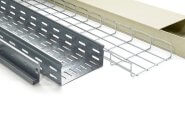The problem of sustainable electricity supply along with a huge number of events in the steel market has caused us to see rising prices in export markets. For example, in recent days, we are witnessing an increase in the price of Iranian export steel ingots due to the coincidence of power outages and growth in demand in this area. In the following, we will evaluate these two factors on the growth of domestic and export steel prices. Please be with Artan Press.
*** Power outages are the biggest challenge for the steel industry
In the current situation, Iran’s steel industry is facing the great challenge of not providing sustainable electricity. It is interesting to know that this problem has not only affected the industry this year. All manufacturing industries have faced this problem in the summer in previous years. But this year’s water shortage and unprecedented heat have made the problem even more apparent. Power outages of steel units generally occurred in winter, due to increased gas consumption in the country and the lack of gas supply to power plants.
The power outage changed in the first half of this year, and since May, manufacturing companies have faced the challenge of providing a stable supply of electricity. This is despite the fact that there is no guarantee that gas production will not be cut off in the winter, and this outlook has led to a relative craving for demand in the steel market.
*** The reason for the rise in prices of steel ingots and other steel inputs
The disruptions that have taken place in the distribution of electricity between productions have become more and more of a staggering and troublesome power outage. For example, Khuzestan Steel Company consumes 650 MW of electricity. In May, the company was informed that it is allowed to consume 80 to 90% of this capacity; Subsequently, this consumption license reached 50%. Meanwhile, the production chart of steel companies is closed on a monthly basis, and any change in this direction can overshadow the supply and demand data in the market.
Consider this issue with the same example we gave. After a while, the company was informed to reduce its consumption to a maximum of 40% of the allocated demand, and finally the order to reduce the consumption demand of all steelmakers was issued. Power outages alone cannot be blamed for the current market situation. The reason for this growth in demand is that a company like Khuzestan Steel has reached 15% of its demand for electricity.
*** Closed loop growth of demand and price of steel ingots
Many steel production companies are similar to Khuzestan Steel. With this electricity quota, the equipment can only be placed in a stable state so that serious damage is not done to the furnaces. There is practically no production in these conditions. When production is facing this problem, no matter how irrational the prices in the market, we see an increase in demand.
At least this is true for the growth of the price of export steel ingots. If the power outage had occurred in a short period of time, we would not have witnessed this amount of fluctuation and inflammation in the market. Extensive power outages in the country, which began in May and peaked in July. Continuation of this trend caused the existing warehouses and the cost price of steel to rise to the point where we see a 23% growth in the rate of export steel ingots in the last three months.
*** Probability of rising commodity prices in the second half of the year
The mere increase in the price of Sadati steel ingots is not the subject of this memo. Many industries are fed by the steel industry. The growth of the steel commodity group can cause a jump in inflation in many commodities. We return to the analysis of the steel ingot market conditions. The decline in the production of steel ingots disrupts the supply of this product to the market.
Steel ingots are the middle link in the iron and steel chain, and the pricing at the beginning and end of the chain is somewhat dependent on the price of the steel ingot. When there is a disturbance in this middle part, the upstream and downstream circles also face a challenge. Extensive price changes in this sector could promise a year of inflation in the steel and commodities markets. This is likely to have an impact on prices in the second half of the year.
*** Decreased steel export performance due to power outages
Along with the growth of steel prices in the domestic market, we will also see a decline in performance in the Iranian steel export market. Failure to meet export obligations on time is another issue that has led to power outages for the country’s steelmakers. The cessation of production of steel units overshadows their exports. This can have economic consequences for the country, at the same time as steel companies incur the cost of delayed delivery of goods and poor performance in the world’s competitive markets.
We should not forget that steel in Iran has played a very important role in foreign exchange in recent years and at the height of sanctions. Now is not the time to leave this market alone. At least some routes should be controlled. For example, the price of export steel ingots should be adjusted so that prices in the domestic market are not affected.
*** Assessing the growth of export steel ingot prices in the energy crisis
It is not bad to have a look at Iran’s export rates. In a situation where the export rates of other countries are increasing with a slight slope, but the prices in the Iranian market have increased with a steeper slope. This can lead to cash customers turning to foreign markets. For example, the average price of an Iranian export ticket was $ 641.5 per ton, which shows a significant increase of $ 21.5 or 3.5 percent compared to the previous week. Decreasing the availability of Iranian export ingots, along with increasing demand from the Chinese market, increasing the price of Iranian steel ingots in The last two weeks have followed. Market data show that if the power outage did not occur, all the needs of the foreign market would be met without any problems.
این مطلب بدون برچسب می باشد.












ثبت دیدگاه